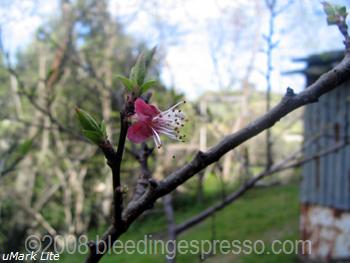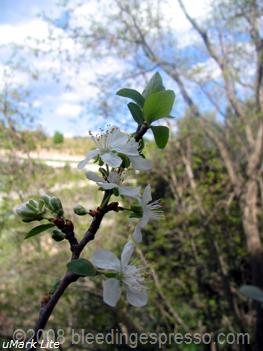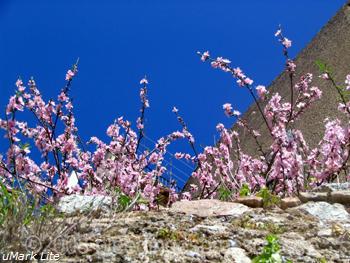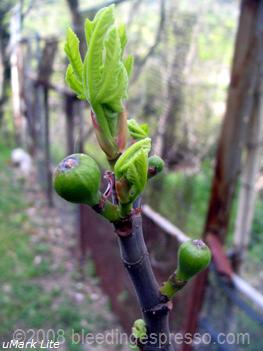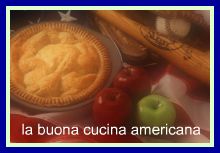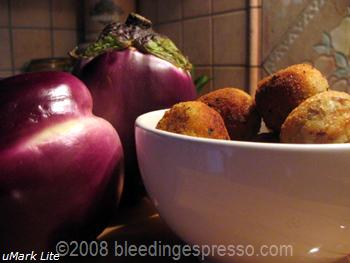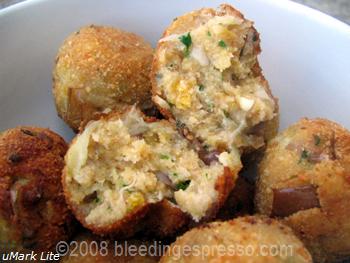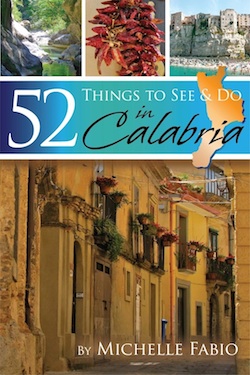Archive for the ‘life in calabria’ Category
The Signs of Spring in Calabria
Even though you couldn’t tell from yesterday’s cold, windy, rainy Pasquetta weather, primavera is definitely here in Calabria, and do you know how I know?
From the flowers on the trees.
I’ve always loved the season of spring and its gorgeous gifts, but before living here I didn’t pay much attention to what blooms when or even really which flowers belong to which trees.
Now I have the routine down and look forward to it every year, which you might be able to tell from my posting about the first almond blossoms–here are last year’s and remember these from January?
Yes, the almond tree (il mandorlo) always flowers first.
Next comes the apricot tree (l’albicocco):
Then the plum tree (il prugno):
And finally the peach tree (il pesco):
Watching this cycle with anticipation and excitement every year is so soothing to me–knowing that, without fail, these blossoms will usher in the new season, new growth, new opportunities, new possibilities.
Also? The figs are coming! The figs are coming!
I just love the sweet breath of inspiration that spring provides, don’t you?
La Buona Cucina America Plus Pasqua in Calabria
Even though there have been small celebrations all week, today really begins the Pasqua (Easter) festivities around here. They won’t finish until late Monday afternoon, so I won’t be back blogging until Tuesday.
But you know I wouldn’t leave you without at least some suggestions of what to do to fill your blog-reading time, right?
Want to experience what I’ll be doing this weekend?
1. Check out Pasqua in Calabria for a description of our day long procession on Sabato Santo (Holy Saturday) and the magical Easter Sunday meeting between the Madonna and Jesus.
2. Then see the photographic evidence in Pasqua in Calabria: The Photos.
3. And if you’re curious about why the fun in Italy continues on until Easter Monday, check out last year’s Pasquetta activities in Still Celebrating.
4. If you’re looking for traditional Calabrian Easter cake, check out Calabrian Cuzzupe.
5. And if you happen to be interested in one of my favorite childhood holiday memories, check out Deno’s Easter Eggs.
And now a very important announcement:
Have you noticed the new widget over in my sidebar? Looks like this?
Here’s the deal. Our philosopher in Umbria, Judith of Think on it!, is stufa of hearing that American food is characterized over here in Italy as unhealthy at best and downright poisonous at worst. We Americans know we eat “real food” and that it’s not all sweets and McDonald’s right?
Well it’s time to show the Italians “La Buona Cucina Americana.”
So Judith, Mary of The Flavors of Abruzzo, Barb of Barb and Art Live in Italy, Sara of Ms. Adventures in Italy, Cherrye of My Bella Vita, Judy of Over a Tuscan Stove, and I are going to be taking turns sharing real American food and recipes each Friday.
In the words of our fearless leader Judith:
Some friends and I are going to begin publishing weekly recipes for old fashioned American food, food like grandma used to cook and perhaps like you still cook, if you happen to be American. So what’s new about that? There are innumerable food bloggers in the USA pouring out magnificent food of every description as made in the USA. Yes, that is so, but they don’t do it from Italy and in Italian!
That’s right folks. All recipes will be in English *and* Italian so that Italians can stop by and enjoy some down home American food–so tell your Italian friends!
Mary is kicking off things today with American Style Shepherd’s Pie, and next week will be Judith’s turn with Chicken Pot Pie.
Mmm. I’m getting hungry…and homesick!
If there’s anything you’d like to see featured in La Buona Cucina Americana or if you’d be up for the challenge of sharing your American recipes in Italian (with ingredients available in Italy), leave a comment here!
I hope the Italians are ready for us.
Buona Pasqua to those celebrating–and buon weekend to all!
What’s Cooking Wednesday: Calabrian Zeppole for St Joseph’s Day
 Happy St. Joseph’s Day! And to my dad, Happy Italian Father’s Day!
Happy St. Joseph’s Day! And to my dad, Happy Italian Father’s Day!
Perhaps you’re confused. That’s OK. You can read all about the Festa di San Giuseppe in last year’s post: Fava Beans and Cream Puffs. There you’ll also find a photo of my great-great-grandfather a.k.a. the reason I ended up in my charming village.
Auguri Papù and to all Josephs, Giuseppes, and dads out there!
Also to Giuseppinas, Josephines, and any others celebrating!
Also, if some of you happen to remember St. Joseph’s Day altars from childhood but are missing them right about now, check out this Virtual St. Joseph’s Day Altar. If you don’t have any idea what I’m talking about, read about this tradition.
Now . . . it’s time for zeppole.
Or as we say around here, zippoli.
As I noted in last year’s post, this word means many different things depending on where in Italy you are. This is a common phenomenon, and in fact, just last night I read a similar sentiment in Laura Schenone’s The Lost Ravioli Recipes of Hoboken: A Search for Food and Family:
“Prescinsêua cheese may mean one thing in the city, but to some contadini in the country it may mean something completely different.”
So, in that vein, some of you know zeppole as cream puffs, but there ain’t no cream in the Calabrian version. In fact, there are anchovies.
How’s that for una sorpresa if you’re expecting cream?
I have a very vague memory of my grandmother [perhaps] making these with anchovies when I was small, but the ones I remember best were simply coated in sugar while they were still hot.
Ah . . . zeppole memories . . .
Waiting patiently at my grandmother’s hip (seriously I was that high, or low I should say as she was under 5 feet tall) for these to cool down ever so slightly to dig in. She never got even near a platter-full before one batch was already gone. They’re that good.
Unfortunately for my recipe repertoire though, my grandmother didn’t make her own dough in her later years when kneading wasn’t possible; she always bought fresh dough from the *best* local pizzeria and bakery.
Indeed, she’d pick up the dough early Friday morning (during Lent especially), make pizzas throughout the day and then fry these babies up just as we were finishing up on the pizza. I cannot tell you how much I miss walking into that house on Friday afternoons after school.
MAMMA MIA . . . CHE PROFUMO!
So I went to a few sources for a recipe:
(1) P’s mom; (2) my friend Alida from nearby Isca sull’Ionio who I met in Philadelphia (she brought homemade biscotti to our first in-person meeting!); and (3) my dear friend Mary Amabile Palmer’s cookbook Cucina di Calabria: Treasured Recipes and Family Traditions from Southern Italy.
Between these wonderful women (grazie mille!), I am tasting exactly what I remember swiping off paper towels as a child. And now you can enjoy them too.
Zeppole con Alici o Semplice
(I Zippoli Calabrese)
Fried Dough with Anchovies or Plain
- 1 package active dry yeast or 10 g of fresh yeast
- 1 1/4 cups warm water
- 3 cups all-purpose or “00” flour
- 1/2 teaspoon salt
- Splash of white wine
- 1 small jar or can of anchovies
- vegetable oil for frying
- confectioner’s or regular sugar for dusting (if making plain version)
1. Dissolve yeast in 1/4 cup of warm water.
2. Put salt and flour in a mound on your working space, a wooden board if possible, although I use something like this like my grandmother used.
3. Make a well in the center and gradually add the dissolved yeast, remaining water, and wine pulling flour into the liquid as you go.
4. Knead for between 5 and 10 minutes until the dough is smooth, elastic, and “bella morbida” as my suocera kept saying–quite soft. If you’re used to making pizza, you may have recognized these ingredients; just make sure the dough here is softer than for pizza.
5. Put dough ball in oiled bowl, cover it with a towel, and put in a dry, warm place to rise for about 2 hours.
6. After the dough has doubled in size, take it out, and knead it for another few minutes. Then put it back in the bowl and allow it to rise again for another couple hours. This will make for fluffier zeppole, but if you don’t have time, just let it rise once. They’ll still be good.
7. In the meantime, if you’re using anchovies, prepare them by removing them from their container and draining oil. Cut them in two pieces so that they will fit into a pocket of dough that will end up being about the size of the palm of your hand once folded over.
8. Heat oil over medium heat.
9. Pull off small chunks of dough about golf-ball size, flatten, and stretch into a rectangle. Place anchovy or two inside and fold over, sealing edges well. If you’re making the plain version, simply stretch to dough to the size of the palm of your hand.
10. Fry in hot oil for 3 to 4 minutes, turning zeppole so they are lightly brown all sides.
11. Remove from oil with slotted spoon and place on paper towels to drain.
12. If you are making them without anchovies, dust them with sugar while they’re still hot–and if you’re like me and actually like the anchovy-filled ones with sugar as well (ssh–they think I’m very weird here for this), go right ahead!
Note you can also fill these with lots of other things. Raisins, for example, are delicious inside and then I recommend dusting with confectioner’s sugar.
Buon appetito!
What’s Cooking Wednesday: Eggplant Balls
Think of these as . . . meatballs without the meat. Vegetarian meatballs? Aubergine croquettes? Balls o’ eggplant? Polpette di melanzane?
Whatever you choose to call them, I call them fabulous and this week’s What’s Cooking Wednesday recipe.
Yesterday was market day, which, ever since I got back from Sicily and a fabulous plate of Pasta alla Norma, has meant a handful of eggplants coming home with me.
I love eggplant balls without any kind of sauce, but you could certainly use a basic tomato sauce as a dip (such as this dipping sauce for fried mozzarella) or even something creamy like perhaps you’d use (although I don’t) for fried zucchini.
Also if you want to make them a little fancier, shape them wider and flatter instead of in balls. Either way these are *delicious* and also a great way to hide eggplant in something tasty.
Eggplant balls
(Polpette di melanzane)
[makes about 18 balls]
- 1 medium eggplant
- 1 1/4 cup breadcrumbs (put aside 1/4 cup for rolling before frying)
- 2 cloves garlic, minced
- 1/4 cup grated Parmigiano Reggiano/Grana Padano cheese
- 2 tablespoons fresh basil and/or parsley, chopped
- 1 egg
- salt to taste
- olive oil for frying
1. Put pot of water on high heat. When water reaches a boil, turn down the heat a bit, cut eggplants in half (and then in half again if you’re using the smaller, fatter eggplants like I do), leaving the skins on, sprinkle a good bit of salt into the water, and then add the eggplant. Let simmer for about 20 minutes or until they are tender.
2. Remove eggplant, drain, and pat dry, letting them cool before chopping them into small cubes, about 1/4 inch in size.
3. Put eggplant in large mixing bowl and add bread crumbs, garlic, cheese, parsley, basil, egg, and salt and mix well. If the mixture is too moist, add more bread crumbs.
4. Shape into balls and then roll balls in breadcrumbs.
5. Heat about 2 tablespoons of olive oil in a large frying pan over medium/high heat. When oil is hot, add eggplant balls one at a time without crowding them. Turn them often with a wooden spoon to make sure all sides get brown, which should take anywhere from 3-6 minutes.
Buon appetito!
Dreaming About the Meaning of Life
I had a different post planned for today (come back tomorrow for more Sicilian adventures–sneak preview in my Flickr set!), but this morning I woke up after having a most interesting exchange with a random bearded man in un sogno–a dream.
In italiano.
We were in a souvenir store, and he was near the back listening to my conversation with the woman clerk about what I’m doing in Calabria.
He walked towards us, rubbing his hands together, turned to me, and said:
Cara signorina, mi dice, tra un Papa e un povero,
chi passa la vita migliore?
[Dear miss, tell me, between a Pope and a poor man,
who lives the better life?]
I paused, looked up to my left then into his dark eyes, and responded:
Caro Signore, questa non è la domanda.
La domanda è . . . chi ha apprezzato la vita di più?
[Dear sir, that’s not the question.
The question is . . . who has appreciated life more?]
When I told P about my dream and he said simply, “Hai risposto giusto.”
You answered correctly.
With all of this churning through my head, I took off for my morning walk with the pooches, and guarda!
The first margherita of the season:
Life is good.
Have a fabulous week my peeps.

